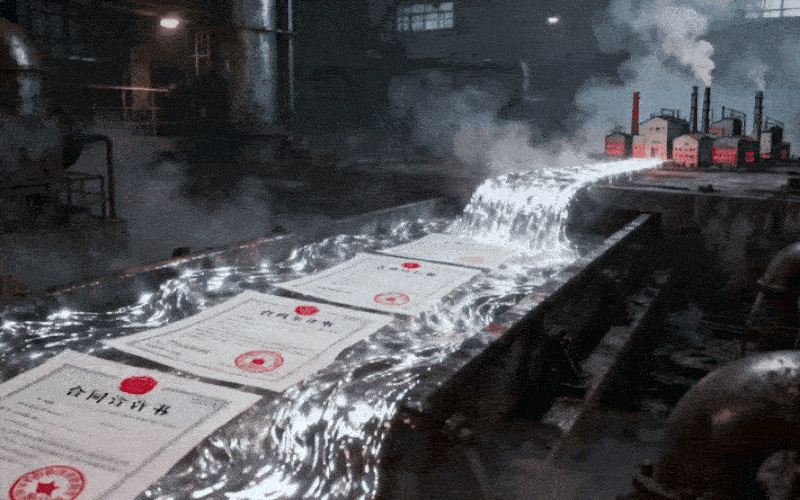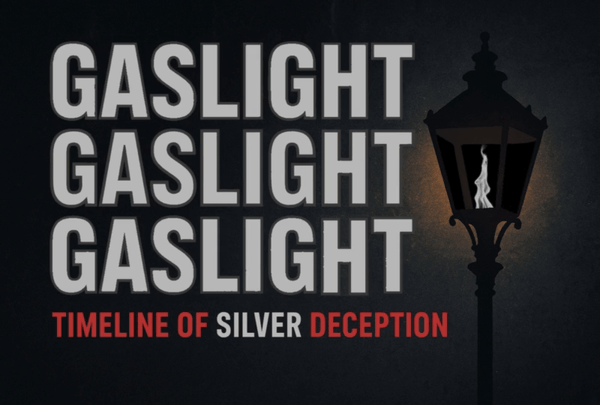Cloud seeding is an established form of weather modification, about 80 years old, that involves dispersing substances into clouds to induce precipitation. The most commonly used seeding agent is silver iodide (AgI)– a compound whose crystalline structure closely resembles ice, making it an effective nucleus for water droplets to freeze and form snow or rain. The technique's goal is typically to increase rainfall or snowfall (for water supply or agriculture) and sometimes to suppress damaging hail or disperse fog. Over decades, silver iodide cloud seeding has evolved from secret Cold War experiments to routine civilian water management across the globe.
Origins of Cloud Seeding and Silver Iodide (1940s)
Cloud seeding traces its origins to the late 1940s. In 1946, chemist Vincent. J. Schaefer at General Electric famously discovered that dropping dry ice into a cloud of supercooled water could produce a snowstorm in miniature. That year, Schaefer conducted the first field test by seeding clouds over Massachusetts' Berkshires with crushed dry ice, successfully triggering precipitation– the first human to actively "do something about the weather," as reported at the time.
Dr. Vincent Schaefer - Snow Making Demonstration (1947)
Following this breakthrough, attention turned to other materials that could serve as artificial ice nuclei. In 1947, Schaefer's colleague Bernard Vonnegut (brother of author Kurt Vonnegut) discovered that silver iodide was even more effective for cloud seeding due to its structural similarity to natural ice crystals.
Silver iodide's molecules form a hexagonal lattice akin to ice, encouraging supercooled water droplets in a cloud to freeze onto the particles and grow into snowflakes or raindrops. This finding launched silver's central role in weather modification programs for the next several decades.
Early experiments quickly moved from the lab to the atmosphere. In 1947, the US military partnered with General Electric in Project Cirrus, the first large-scale cloud seeding trial. On October 13, 1947, a B-17 bomber aircraft penetrated a hurricane off the coast of Florida and dispersed about 80 pounds of dry ice into the storm. The hurricane unexpectedly changed course and struck Savannah, Georgia, leading to public uproar and a temporary pullback in hurricane modification attempts.
Looking to diversify your portfolio with tangible assets? Jim Cook at Investment Rarities offers expertly curated asset investments with their extremely dedicated team. Discover unique opportunities often overlooked by traditional markets. Visit InvestmentRarities.com Today!
Nevertheless, throughout the late 1940s and 1950s, small-scale cloud seeding projects proliferated. Scientists and entrepreneurs tested "rainmaking" by firing silver iodide flares from planes or releasing it via ground-based burners, hoping to end droughts or ensure snow for water-hungry regions. By the late 1950s, cloud seeding efforts had spread internationally– for example, meteorologists in Australia and Europe conducted some of the first trials outside of the US, inspired by Schaefer's work. The stage was set for both ambitious military uses and widespread civilian adoption of silver iodide in the coming decades.
Cold War Era: Military Weather Modification Programs
During the Cold War, the military potential of weather control drew serious interest. The idea of weaponizing the weather led to several secret projects using silver iodide to manipulate storms. One of the earliest was Project Stormfury (1962-1983), a US Navy and Weather Bureau experiment to weaken hurricanes by seeding their eyewalls with silver iodide. While Stormfury's results were inconclusive and it ultimately did not produce a reliable hurricane-taming method, it demonstrated the military's willingness to invest in climate manipulation research.
The most notorious example of weather modification in warfare is Operation Popeye during the Vietnam War. Beginning in March 1967, the US Air Force carried out a covert cloud seeding campaign to extend the monsoon season over the Ho Chi Minh Trail in Southeast Asia. Pilots flew missions out of Udon Thani, Thailand, dispersing silver iodide (and sometimes lead iodide) into tropical clouds from C-130 aircraft in hopes of triggering torrential rain. The goal was to muddy roads, cause landslides, and slow the movement of North Vietnamese troops and supplies.
Over 2,600 flights were conducted as part of Operation Popeye from 1967 to 1972 under total secrecy. According to declassified testimony, the program cost approximately $3.6 million per year (about $23 million in today's dollars) and did succeed in inducing extra rainfall in targeted areas– but its tactical impact was limited and scientifically "unverifiable." US officials later admitted that Popeye's success was "certainly limited" and impossible to conclusively prove. The revelation of the five-year weather warfare project caused international alarm. In the mid-1970s, as details of Popeye became public, the US and Soviets collaborated to draft an international ban on hostile environmental modification. The result was the ENMOD Convention (Environmental Modification Convention), enacted in 1978, which prohibits any military or hostile use of weather modification techniques. This treaty (to which dozens of countries are signatories) was a direct response to concern that superpowers might turn storms into weapons. Henceforth, cloud seeding would be officially limited to peaceful purposes worldwide.
Despite the treaty, Cold War-era weather modification efforts did continue in a non-combat context. The Soviet Union, for instance, pursued extensive weather modification research and applications for domestic purposes. Soviet scientists experimented with cloud seeding to mitigate hailstorms and ensure good weather for important events. One dramatic use came in 1986 after the Chernobyl nuclear disaster: Soviet pilots fired artillery shells packed with silver iodide into clouds over Belarus to force radioactive rainfall to drop before the contaminated cloud could reach Moscow.
The emergency cloud seeding operation sacrificed some regions with intense "black rain" fallout in order spare the Soviet capital from radioactive rain. In later years, Russia also became known for routinely seeding clouds to prevent rain on Victory Day military parades– especially, clearing the skies by inducing early showers outside Moscow.
These examples underscore the breadth of military and strategic scenarios in which silver iodide-based weather control was attempted, from flooding enemy supply lines to protecting civilians from nuclear fallout. By the end of the Cold War, however, the focus of cloud seeding had largely shifted from military experimentation to civilian and industrial uses.
[The Most Secure Stack Tracker]
…because you shouldn't need to have a boating accident to keep your metals safe
Civilian and Agricultural Applications
After the initial hype and secrecy of mid-century weather control, silver iodide cloud seeding found its mainstay in civilian applications. Starting in the 1950s and 1960s, governments and private enterprises began using cloud seeding as a tool for water management and agriculture. The principle was simple: if clouds could be “squeezed” for a bit of extra rain or snow, it could benefit farmers, fill reservoirs, and even reduce hazardous weather.
In the United States, early projects like the Bureau of Reclamation’s Project Skywater (launched in the 1960s) explored large-scale precipitation enhancement in the western states. By the 21st century, cloud seeding has become a routine part of water strategy in many arid regions. At least nine U.S. states – including California, Colorado, Wyoming, Texas, and Idaho – currently conduct cloud seeding programs to augment rainfall or snowfall.
For example, counties in California’s Sierra Nevada seed winter clouds to boost mountain snowpack and spring runoff for hydropower and city water supplies. In Texas, regional water authorities seed summer clouds to spur rain for agriculture and aquifer recharge. Some private agricultural cooperatives also sponsor seeding to suppress hail (by seeding developing thunderstorms with silver iodide, they aim to pre-freeze and shatter hailstones while small, reducing crop damage). A notable case is in France, where a national program to mitigate “atmospheric plagues” (hail storms) has been active since 1951. Farmers in hail-prone regions of France have for decades pooled resources to deploy cloud seeding in defense of vineyards and orchards.
Beyond farming, commercial and industrial uses of cloud seeding have emerged. Ski resorts, for instance, have embraced cloud seeding to increase snowfall on their slopes. Vail Ski Resort in Colorado has used silver iodide generators on mountain peaks to coax more snow since 1975.
In another arena, airports and airlines have applied cloud dissipation techniques to clear out fog – during the 1970s, projects like Project Cold Wand successfully used seeding and other methods to disperse fog at U.S. airfields, improving visibility. Even event planners have dabbled in weather modification: in recent years, a travel company in the UK offered a service to seed clouds in advance of luxury weddings in France, attempting to ensure sunny wedding days by “wringing out” rain the day before.
Wall Street Silver is under Silver Wars Control.
Now Free from Fraud!
While such niche uses are less common, they highlight the creative civilian demand for weather control. At its core, though, the primary civilian motivation for cloud seeding has remained increasing precipitation for water resources. This has only grown in importance as many regions face recurring droughts and the impacts of climate change on water availability. In fact, the Intergovernmental Panel on Climate Change (IPCC) has recommended cloud seeding as one adaptation tool to help communities endure drier climates.
Global Expansion of Weather Modification Programs
What began as a few experiments in the U.S. is now a global phenomenon. Today, more than 50 countries invest millions of dollars each year in weather modification initiatives.
Many governments see cloud seeding as a strategic supplement to their water management or disaster mitigation efforts. Below are some notable examples of silver iodide cloud seeding programs around the world:
China: China operates the world’s largest weather modification program by far. The national Weather Modification Office (part of the China Meteorological Administration) employs an estimated 35,000–50,000 people and is equipped with thousands of ground generators, rocket launchers, and aircraft for cloud seeding. Chinese efforts focus on alleviating drought, boosting agriculture, and ensuring clear skies during major events. For instance, China famously seeded clouds to clear Beijing’s air pollution and prevent rain ahead of the 2008 Summer Olympics, and again prior to events like the 2022 Winter Olympics.
In central and western China, massive seeding campaigns are launched to induce rainfall in drought-stricken areas such as the Yangtze River basin. In 2022, Chinese authorities claimed that a series of cloud seeding operations (241 flights and over 15,000 rocket dispersals) produced an extra 8.56 billion cubic tons of rainfall in the Yangtze basin during a severe drought. China’s annual weather modification budget is in the hundreds of millions of dollars, reflecting the country’s belief in “weather control” as a component of national infrastructure.
India and Southeast Asia: Several Asian nations use cloud seeding to address monsoon variability and pollution. India has periodically deployed cloud seeding in states like Maharashtra and Karnataka to combat drought, and in 2023 New Delhi experimented with seeding to spur rain in hopes of clearing severe smog. Thailand has one of the longest-running programs – the Royal Rainmaking Project, initiated in 1969 under King Bhumibol Adulyadej, which continues to this day augmenting rainfall for agriculture. Indonesia uses cloud seeding to fill reservoirs and even to dampen peat fires by inducing rain during the dry season. In Vietnam, cloud seeding has been used to relieve drought and was also infamously targeted by the U.S. during Operation Popeye in the 1960s.
Middle East: In water-scarce regions of the Middle East, cloud seeding is viewed as a promising source of additional freshwater. The United Arab Emirates (UAE) and Saudi Arabia run active cloud seeding operations, flying aircraft into suitable clouds to boost rainfall over deserts. The UAE, for example, has invested heavily in weather tech and even tested using drones to charge clouds electrically and coax rainfall. Iran and Israel also have a history of cloud seeding for rain enhancement. (Notably, Israel was a pioneer in cloud seeding from the 1960s onward, but after 50 years of operations, Israel halted its national program in 2021, questioning the cost-effectiveness of continued seeding.)
Africa: A number of African countries have adopted cloud seeding to help manage drought and agriculture. Morocco has run a cloud seeding program (called “Al-Ghait”) since the 1990s to increase rain in its semi-arid interior. Nations in the Sahel such as Mali, Niger, and Burkina Faso have used seasonal cloud seeding for rainfall since the 1970s–80s. Ethiopia and Kenya in recent years announced plans to deploy cloud seeding to alleviate chronic drought conditions as well.
If you appreciate Silver Wars content, please consider giving a donation!
Europe and Others: In Europe, aside from France’s longstanding hail suppression program, countries like Spain, Germany, and Russia have used cloud seeding for local rain enhancement or hail mitigation on and off. The Russian Federation today regularly seeds clouds to reduce hail in agriculturally important areas and to ensure rain does not ruin public events in Moscow.
This global tapestry of cloud seeding underscores how silver iodide has been deployed in the skies worldwide – from the American West to the monsoon lands of Asia – all in an effort to control precipitation. While techniques and scale vary, the common thread is the hope that a bit of “silver” in the clouds can provide rain on demand when nature falls short.
Efficacy and Legacy: Was the Silver Lining Worth It?
Many meteorologists view cloud seeding as a tool that works, but only under favorable weather scenarios – it is “not going to solve all our problems” as one researcher put it, yet it can make clouds “more efficient” at producing precipitation when conditions allow.
One clear consensus, however, is that the environmental impact of silver iodide at the quantities used is minimal. Silver iodide is nearly insoluble in water and is deployed in extremely small concentrations (typically measured in grams or kilograms spread across massive cloud volumes). Studies since the 1960s have not found harmful effects on ecosystems or human health from AgI seeding. In 1978, for instance, it was estimated that U.S. cloud seeding programs introduced about 3 metric tons of silver into the environment (as AgI) – a tiny fraction (0.1%) of total industrial silver emissions that year. Today, the annual silver usage for cloud seeding in North America remains on the order of a few tons, and globally perhaps a few times that. This means that aside from the financial cost, the main risk of cloud seeding is simply that it might not yield enough benefit – essentially, wasting effort (and silver) on empty clouds.
And that raises the final question: How much silver has been literally “scattered to the winds” in the pursuit of rain? Over the full history of cloud seeding, the cumulative amount of silver iodide used is substantial. At a few metric tons per year in the U.S. and similar levels elsewhere, it is likely that hundreds of tons of silver have been released into the skies worldwide since the 1940s. If cloud seeding’s outcomes are uncertain, one could argue that a significant quantity of precious silver may have been expended for marginal gains – a proverbial silver lining that sometimes failed to deliver its promised rain.
This is perhaps the one controversy that surrounds silver iodide cloud seeding: whether the results have justified the cost and resources over time. Critics point to decades of modest success rates and ask if those tons of silver were essentially wasted on wishful thinking. Supporters, however, counter that even a slight increase in precipitation can be invaluable during droughts, and that ongoing refinements (drones, new seeding agents, better targeting with weather radar) are improving the odds of success.
We believe with silver supplies on the low and public sentiment regarding this tech at a low as well, its best to just scrap the tech for practical reasons. Efforts may be underway, but for different reasons... or maybe different reasons are being said as the cover was what we already know. There's not enough silver to go around.












